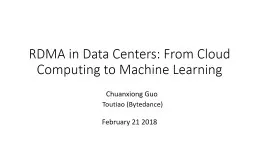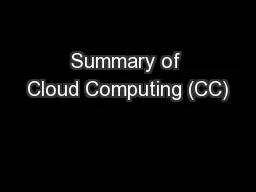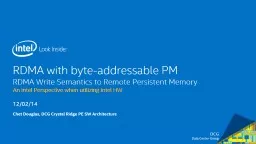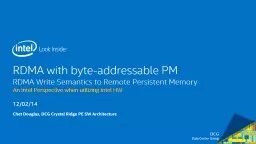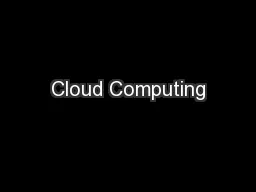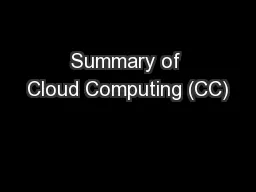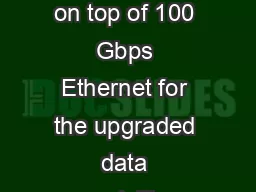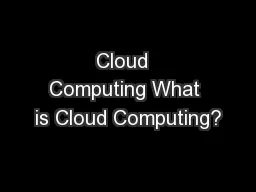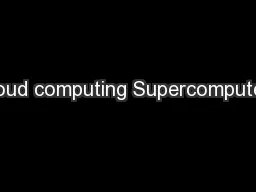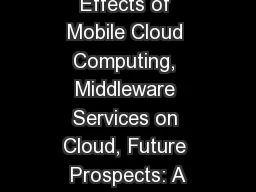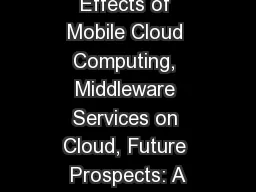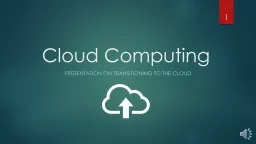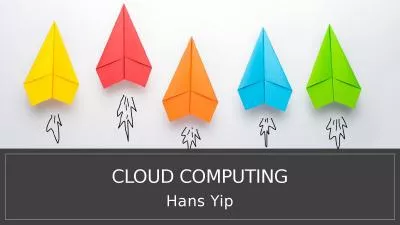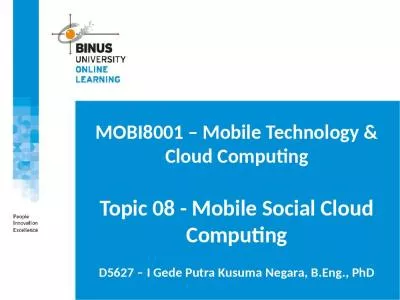PPT-RDMA in Data Centers: From Cloud Computing to Machine Learning
Author : calandra-battersby | Published Date : 2018-11-09
Chuanxiong Guo February 21 2018 Toutiao Bytedance Background RDMA over commodity Ethernet RoCEv2 RoCEv2 safety and performance challenges Deployment experiences
Presentation Embed Code
Download Presentation
Download Presentation The PPT/PDF document "RDMA in Data Centers: From Cloud Computi..." is the property of its rightful owner. Permission is granted to download and print the materials on this website for personal, non-commercial use only, and to display it on your personal computer provided you do not modify the materials and that you retain all copyright notices contained in the materials. By downloading content from our website, you accept the terms of this agreement.
RDMA in Data Centers: From Cloud Computing to Machine Learning: Transcript
Download Rules Of Document
"RDMA in Data Centers: From Cloud Computing to Machine Learning"The content belongs to its owner. You may download and print it for personal use, without modification, and keep all copyright notices. By downloading, you agree to these terms.
Related Documents

